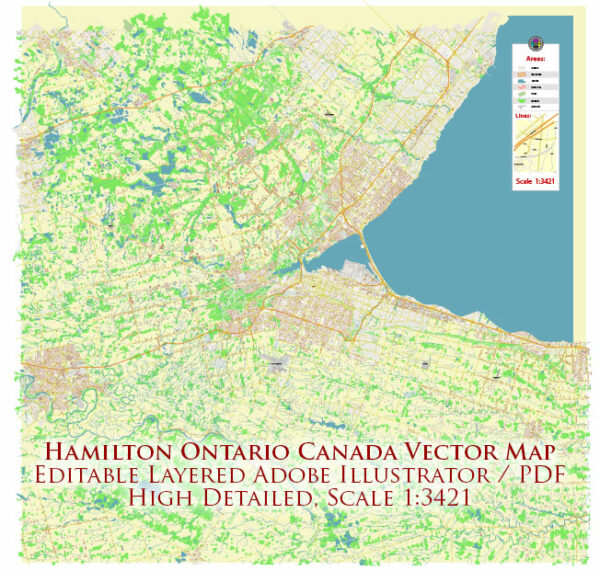As of my last knowledge update in January 2022, I can provide you with a general overview of the history of urban development in Hamilton, Canada up to that point. Please note that there may have been further developments or changes since then.
Early History:
- Hamilton, located in the province of Ontario, has a rich history that dates back to the late 18th century. The area was originally inhabited by Indigenous peoples, including the Neutral, Mississauga, and Haudenosaunee (Iroquois) nations.
19th Century:
- The city’s growth began in the early 19th century, driven by its strategic location along the Great Lakes and proximity to natural resources.
- Hamilton played a significant role in the development of Canada’s industrial sector during the 19th century, earning the nickname “The Ambitious City.”
- The construction of the Desjardins Canal (1837) and later the Welland Canal (1829) facilitated transportation and contributed to economic growth.
Industrialization:
- Hamilton became a major industrial center, with a focus on steel production, manufacturing, and other heavy industries.
- The presence of industries attracted a diverse population, leading to increased urbanization.
20th Century:
- In the mid-20th century, Hamilton continued to thrive as an industrial hub, and its population grew significantly.
- Urban development during this period saw the establishment of residential neighborhoods, commercial districts, and infrastructure projects.
Economic Shifts:
- The latter part of the 20th century saw economic challenges as the steel industry declined, impacting the city’s economy.
- Efforts were made to diversify the economy and promote urban revitalization.
Modern Developments:
- In recent years, there has been a focus on urban renewal and redevelopment projects to revitalize certain areas and enhance the quality of life for residents.
- The city has invested in cultural and recreational amenities, including parks, waterfront development, and cultural institutions.
Education and Innovation:
- Hamilton is home to McMaster University and Mohawk College, contributing to the city’s identity as an educational and research hub.
- The health and technology sectors have become increasingly important, fostering innovation and attracting new businesses.
Challenges:
- Like many cities, Hamilton faces challenges related to infrastructure, transportation, and managing growth while preserving its historical character.


 Author: Kirill Shrayber, Ph.D.
Author: Kirill Shrayber, Ph.D.